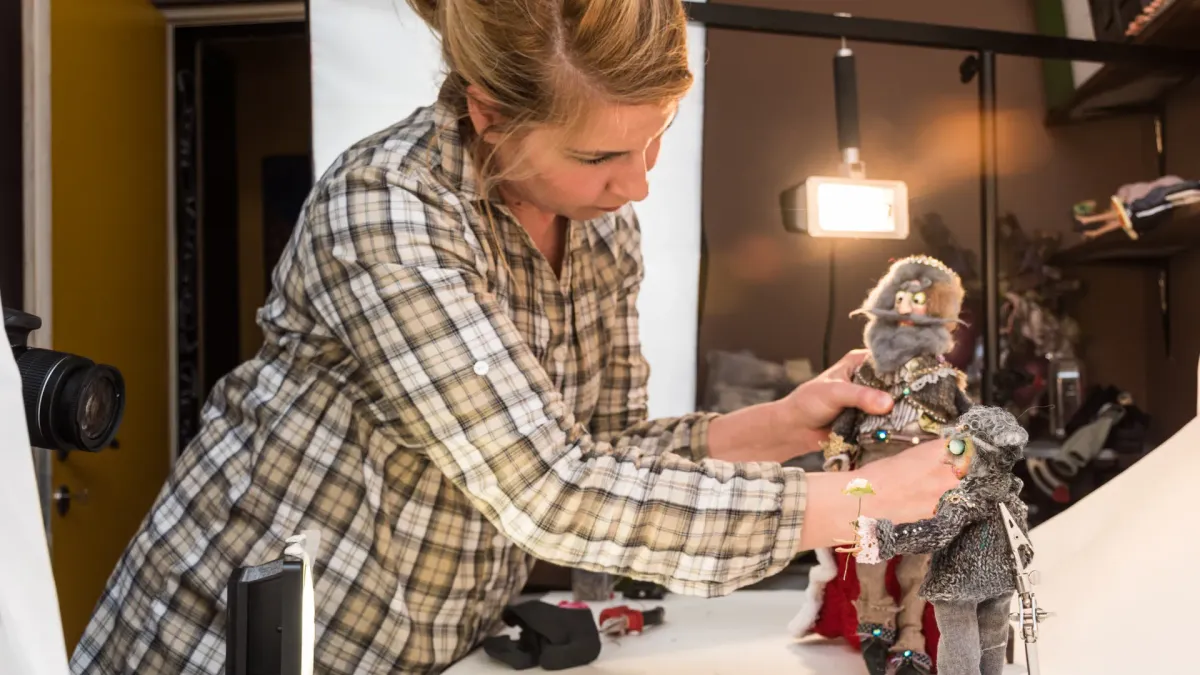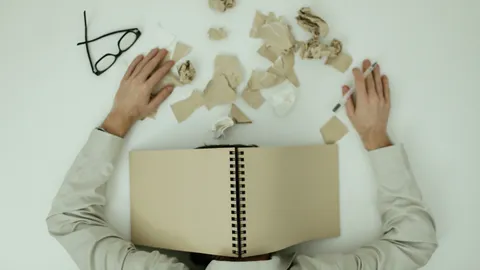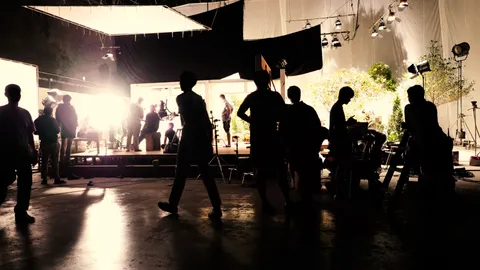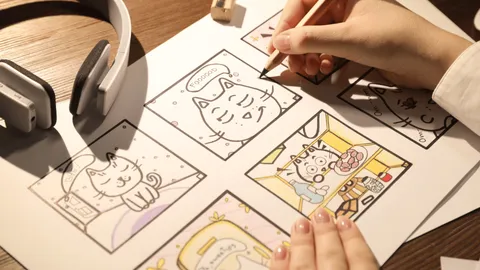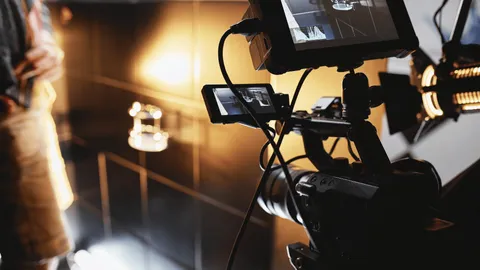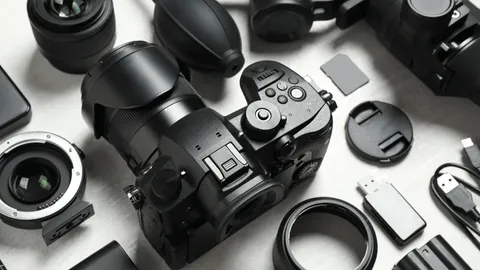Introduction
Everything You Need to Know About Stop Motion - WWelcome to the exciting world of stop motion! In this helpful guide, we'll explore everything you need to know about this interesting way of making animations. Let's start by learning what stop motion is, discovering its history, and understanding why it's so important in the world of movies and animations.
A. Definition of Stop Motion
Basically, stop motion is a really cool way to make things that don't move seem like they're moving in a movie or animation. Imagine you have a toy or a puppet. You take lots of pictures of it, but each time you slightly move it a tiny bit. Then, when you play all those pictures really fast, it looks like the toy or puppet is moving all by itself, like magic! It's like making still things come to life in a movie.
B. Historical Evolution of Stop Motion
A long time ago, when movies were just beginning, people started to think about how to make things in their films look like they were moving. One of the ways they came up with was stop motion animation. It was a bit simple at first, but over time, it got way better and more impressive.
Two important pioneers in the world of stop motion animation were Willis O'Brien and Ray Harryhausen. They were like the "grandparents" of this technique. Willis O'Brien did amazing work in the early 20th century. He's famous for bringing dinosaurs to life in movies like "King Kong." People were amazed by how realistic those dinosaurs looked, even though they were just models moved bit by bit.
Then there's Ray Harryhausen, who came along a bit later. He took what O'Brien did and made it even better. He worked on movies like "Clash of the Titans" and "Jason and the Argonauts." In these films, he used stop motion to create incredible creatures and special effects. His work was so impressive that it inspired generations of filmmakers and animators to use stop motion to tell all sorts of stories.
So, thanks to these talented pioneers, stop motion animation went from being a simple idea to a fantastic and important part of the entertainment world. It's a bit like they laid the groundwork for all the amazing animations and movies we see today.
C. Significance in Film and Animation
Stop motion animation is a super important part of both movies and cartoons. People have been enjoying it for more than a hundred years, and it never gets old. This special technique allows filmmakers and animators to create magical and exciting worlds, make characters that stay in your memory forever, and tell amazing stories using real objects that they move a tiny bit at a time.
What makes stop motion so unique is that it's not like other types of animation. It uses real, touchable things to create the magic. This sets it apart from computer-generated animations or traditional hand-drawn ones. You can see and feel the difference.
Stop motion has made its mark in different parts of the movie world. It's not just for big Hollywood blockbusters. You've probably seen charming characters like Wallace and Gromit in their funny adventures. But stop motion can also tell darker and more mysterious tales like in "Coraline."
In this guide, we're going to dig deep into stop motion. We'll talk about all the different types of stop motion, the tools and equipment you'll need, and how to plan and make your own stop motion project. Whether you want to become an animator or you're just curious about how they make those cool stop motion movies, this guide will give you all the knowledge and inspiration you need to start your own stop motion journey. So, let's dive in and discover the amazing world of stop motion animation together!
Types of Stop Motion
When you dive into the amazing world of stop motion, it's good to know about the different kinds of stop motion techniques out there. Each one has its own special way of making things come to life. We'll explain these types in easy words, and also remember how they can help with SEO:
A. Traditional Stop Motion
Traditional Stop Motion is like the grandparent of all stop motion techniques. It's the one that started it all. In this method, you work with real physical objects or characters, and you take pictures of them, but not just any pictures – you take one picture at a time, and each picture shows a tiny, little movement of those objects or characters.
Now, within Traditional Stop Motion, there are two popular types:
- Puppet Animation: Imagine you have special puppets or figures. These puppets are not your regular toys; they are carefully designed and crafted with movable joints. These joints allow you to move the puppets in very precise ways for each picture. So, you take a picture, move the puppet just a tiny bit, take another picture, and so on. This meticulous process creates the illusion of these puppets coming to life and moving on their own. Classic movies like "The Nightmare Before Christmas" or "Coraline" used puppet animation.
- Claymation: As the name suggests, Claymation uses characters or figures made from clay. It's known for its tactile and organic feel. Artists mold and reshape these clay figures a little bit for each frame, and when you play all those frames together really fast, it looks like the clay characters are moving smoothly and naturally. You might have seen this in action in movies like "Wallace and Gromit" or "Chicken Run."
So, Traditional Stop Motion is like the foundation of stop motion animation. It's all about taking small, careful steps with real objects or characters to create the magic of movement in movies and animations.
B. Object Animation
This is a really fun type of stop motion. Imagine you can bring everyday objects to life and make them seem like they're moving and doing things on their own. It's like giving your toys, kitchen utensils, or even fruits a chance to star in their own movie!
Here's how it works: You pick an object, let's say a spoon. Then, you move the spoon a tiny bit and take a picture. After that, you move it a bit more and take another picture. You keep doing this over and over, making small movements and taking pictures each time. When you play all those pictures really fast, it looks like the spoon is moving all on its own, just like in a cartoon.
The cool thing about Object Animation is that you can be super creative because almost anything can become your animated star. It's like bringing everyday objects to life and giving them their moment of fame in your own animated story. So, whether it's a bouncing ball, a dancing banana, or a flying paper airplane, you can make it happen with Object Animation!
C. Cutout Animation
This is a cool way to make things move in stop motion. Instead of using 3D objects or puppets, we use flat characters or objects that are cut out from things like paper or other materials. These cutouts can be of people, animals, or anything you can imagine.
Here's how it works: You have these cutout characters or objects, and you move them around a little bit. Then, you take a picture of them. Next, you move them a bit more, take another picture, and keep doing this step by step. It's like making a flipbook, but with cutout pieces.
The result is something unique – it looks like these flat characters or objects are coming to life and moving around in your animation. This style has its own special look, and it's been used in lots of TV shows and short movies. It's a bit like creating a moving storybook using cutout pieces, and it can be really fun and artistic!
D. Pixilation
This is a super fun type of stop motion where real people become the characters. Instead of using puppets or objects, you and your friends or actors are the stars of the show.
Here's how it works: You and the others act out a scene, but instead of moving around freely, you move just a tiny bit for each photo. It's like you're taking a step, freezing for a photo, then taking another step, and so on. This makes it look like you're moving in a playful and dreamy way.
Imagine someone disappearing by taking one step at a time, or turning into something else by changing a little in each picture – that's the kind of magical stuff you can do with Pixilation. It's like mixing real-life acting with stop motion, and it's often used for funny or really creative stories. So, you and your friends can become the stars of your own fantastic pixilation adventure!
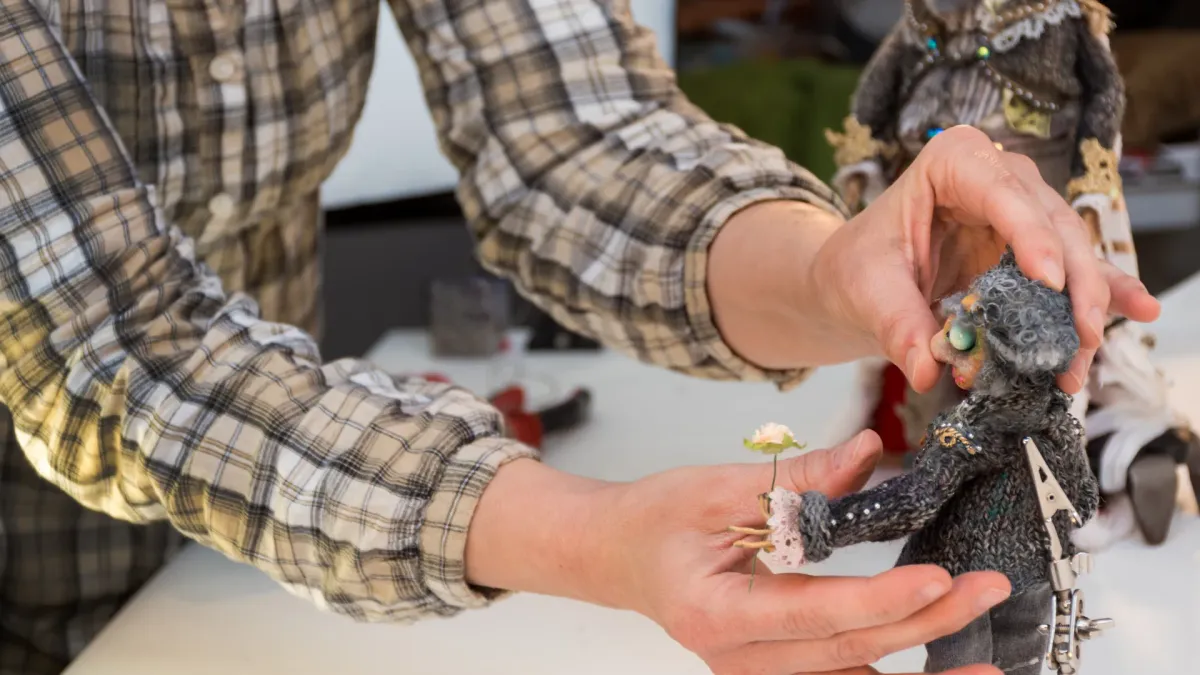
Stop Motion Techniques
In the amazing world of stop motion animation, techniques are key to making objects and characters come alive. Knowing these techniques is really important for making great animations. It's also good for SEO because these techniques are often used as keywords in online searches. Now, let's look at the main stop motion techniques in easy-to-understand terms:
A. Frame-by-Frame Animation
This is the most crucial part of stop motion. It's like the secret sauce that makes things in your animation look like they're moving. Here's how it goes down:
- Take a Picture: First, you snap a picture of the thing you want to animate. It could be a puppet, an object, or even yourself if you're doing pixilation.
- Make a Tiny Change: Now, you change that thing just a little bit. Move its arm a tiny bit, adjust its position, or anything that makes it look like it's taking a small step in your story.
- Take Another Picture: After making that tiny change, you take another picture.
- Repeat, Repeat, Repeat: You keep doing this over and over again. Take a picture, make a small change, take another picture, and so on.
When you play all these pictures in quick succession, one after the other, it creates a magical illusion. It looks like the object or character is actually moving smoothly, just like in a movie. So, even though it's a simple trick, it's super clever and the key to making things come alive in stop motion.
B. Puppet Manipulation
In this method, we work with special puppets or figures that have movable parts, like joints. These puppets are a bit like mini-actors in our animation.
Here's how it works:
- Puppet with Joints: Imagine you have a puppet, and it's not just a regular doll. It has special joints, like elbows and knees, that can be bent and moved.
- Tiny Changes: Now, for every picture we take, we make small adjustments to the puppet's position. It's like giving them a little nudge or moving their arm just a bit.
- Precise Movements: We do this for each picture, and we plan it all very carefully. It's almost like choreographing a dance with our puppets. Every move they make is well thought out, and we make sure it's precise.
When we play all these pictures really fast, it looks like our puppets are moving smoothly and naturally, just like in a dance. So, puppet manipulation is like directing a tiny puppet show where every movement counts to create the illusion of motion.
C. Set Design and Construction
In stop motion, it's not only about the characters but also the world they live in. Think of it like building a tiny movie stage for them.
Here's how it works:
- Backdrop and Props: You create the background (like the scenery) and all the things your characters will use or interact with. This includes things like tiny furniture, trees, and even small dishes if your characters are having a meal.
- Attention to Detail: Every little thing matters. You have to make sure the furniture looks just right, and even the tiniest details, like the patterns on the wallpaper, are taken care of.
- Immersive Environment: The goal is to make it all look so real that when people watch your animation, they feel like they're inside that world. It's like creating a small, magical universe just for your characters to live in.
So, set design and construction are all about making sure your characters have a beautiful and believable place to exist in your animation.
D. Lighting and Camera Setup
In the world of stop motion, getting the right lighting and camera setup is super important. These are like the directors of your animation.
Here's how it works:
- Proper Lighting: Lighting is all about making sure your scenes are well-lit. It's like shining a spotlight on your characters and sets. Good lighting brings out all the tiny details and makes your animation look more 3D and real.
- Camera Position and Settings: Camera setup involves putting your camera in the right spot and making sure it's set up to take the best pictures. You adjust things like focus, brightness, and how fast the camera takes pictures.
- Steady Camera: Making sure your camera doesn't move is really important. If it shakes even a little, it can mess up your animation. So, you need to keep it super still.
By understanding these two things, you can make your animations look awesome. You'll appreciate how much work goes into your favorite animations and be better prepared to make your own. Whether you want to be an animator or you're just curious about how it all happens, these techniques are like your key to the magical world of stop motion animation.
Essential Equipment for Stop Motion
Imagine you're a builder, and having the right tools is like having a super toolbox for your job. In stop motion animation, these tools are like your magic wands. They not only turn your ideas into reality but also help people find your work online. So, let's discover the important equipment you'll need to start your stop motion adventure, explained in easy words:
A. Camera Selection and Settings
Choosing the Right Camera for Stop Motion - Your camera is like the storyteller of your animation, capturing each part of the story, one picture at a time. When you're picking a camera for stop motion, here are some things to think about, explained in easy words:
- Resolution: Resolution is like the camera's superpower. A higher resolution camera takes super clear and sharp pictures. So, if you want your animation to look really crisp, go for a camera with high resolution.
- Frame Rate: Frame rate is like the speed of your animation. If you want it to be super smooth and fast, you can adjust the frame rate. Think of it like making your characters move in slow motion or really quickly.
- Manual Settings: Manual settings are like the buttons and knobs on your camera that you can control. They let you decide things like where the camera should focus, how bright or dark the picture should be, and what colors should look like. These settings are super important because they make sure all your shots look consistent and fit together perfectly.
So, when you're picking a camera for your stop motion, think about these things to make sure your camera tells your story just the way you want it.
B. Tripods and Stabilization
Keeping Your Camera Steady in Stop Motion - In stop motion, it's like a super important rule to keep your camera really still. Even the tiniest wiggle can mess up your animation and make it look weird.
Here's how you do it:
- Tripod: A tripod is like a superhero stand for your camera. It holds your camera super still between each picture. Imagine if your camera were a bird, the tripod would be like a branch where the bird sits without moving.
- Stabilization Tools: These are like extra tools that help keep your camera steady. They're like little helpers that make sure your camera doesn't move when you don't want it to.
- DIY Tricks: If you're feeling creative, you can even come up with your own ways to keep the camera steady. It's like inventing your own magic to make sure everything stays in place.
So, in stop motion, being steady is like the golden rule. It's how you keep your animation looking smooth and perfect.
C. Lighting Tools and Techniques
Lighting in Animation: Think of lighting as the painter's brush in the world of animation. Just like an artist uses a brush to create a beautiful painting, proper lighting makes your animation scenes look amazing.
Here's how it works:
- Enhancing Scenes: Good lighting makes everything in your animation look better. It brings out the tiny details and creates a certain mood or feeling. It's like the sun or the moon in your animation world.
- Basic Lighting Kits: To get started, you can use basic lighting kits. These are like beginner's tools that include things like softboxes or diffusers. They make the light softer and less harsh, like a cloudy day instead of a super bright and sunny day.
- Experiment: You can play around with how the lights are placed and how bright they are. It's like being a scientist, trying different potions to see which one gives you the perfect effect in your animation.
- Consistency: Here's the trick – you want your lighting to look the same in every picture you take. It's like having the same colors in every page of a coloring book. This way, your animation looks smooth and perfect.
So, lighting is like the magic wand that makes your animation scenes look fantastic. It's all about getting the right mood and making everything consistent across all your pictures.
D. Software for Editing and Post-Production
Putting It All Together with Editing Software - After you've taken all your pictures, it's like gathering all the pieces of a puzzle. You need a special computer program, like a digital cutting room, to do this.
Here's how it works:
- Editing Software: This is like the magic computer program that helps you put your pictures in order. It's where you arrange all your frames, like a comic strip, so they play one after the other.
- Adding Sound and Effects: You can also use this program to add sounds, music, or special effects to make your animation even cooler. It's like adding the perfect soundtrack to your movie.
- User-Friendly: Look for software that's easy to use, like a game or an app. There are some you can use for free, and others you need to pay for, depending on how fancy you want your animation to be.
So, with the right computer program, you can take all your pictures and turn them into an awesome stop motion animation. It's like bringing all the pieces of your puzzle together to create something amazing. Now you have all the tools you need to make fantastic stop motion animations, whether it's a fun short film or showing off a cool product. So, get ready, set up your stage, and let your imagination go wild in the magical world of stop motion!
Planning Your Stop Motion Project
Welcome to the exciting world of stop motion animation! To make your cool ideas come to life, you need to plan things carefully. This planning stuff is not just for making awesome animations but also helps people find your work online. So, let's learn the important steps for planning your stop motion project in an easy way:
A. Scriptwriting and Storyboarding
Every great stop motion animation begins with a compelling story. Start by scripting your narrative, outlining the plot, characters, and dialogues. Once you have your script in hand, create a storyboard. Think of it as a comic book version of your animation, with sketches or images representing each scene. This visual roadmap will guide you through the entire project.
B. Previsualization
"Previsualization," or "Previz," is like making a practice version of your stop motion animation. It's when you use simple sketches or digital tools to plan how your animation will look before you actually make it. This helps you figure out things like where to put the camera, how characters will move, and how scenes will flow together. It's like a rehearsal that helps you fix any issues and make your final animation even better. It's really helpful because:
- Planning Camera Angles: You decide where to put your camera to get the best shots. It's like picking the best spots for your treasure hunt.
- Character Movements: You figure out how your characters will move and where they should be in each scene. It's like knowing where you need to go on your treasure hunt.
- Scene Transitions: You plan how each scene flows into the next. It's like connecting the dots on your treasure map.
How It Helps: Doing this step is like practicing your treasure hunt. It helps you see if there are any tricky parts or problems before you start. That way, you can fix them and make your animation even better when you actually shoot it. It's like making sure your treasure hunt map is perfect before you set off on the adventure!
C. Creating a Shooting Schedule
Time management is crucial in stop motion animation. Create a detailed shooting schedule that outlines when and what you'll be shooting each day. Be realistic about your pace, as stop motion can be time-consuming. Factor in breaks and allow extra time for unexpected hiccups. Sticking to a schedule keeps your project on track.
D. Gathering Necessary Materials
To bring your stop motion project to life, you'll need a variety of materials. This includes props, characters, backgrounds, and any additional elements required for your scenes. Make a checklist of everything you need and ensure it's readily available during the shoot. Organization at this stage saves you valuable time later on.
With a well-thought-out plan in place, you'll be equipped to tackle your stop motion project with confidence. Whether you're crafting a whimsical short film or a product demonstration, these planning steps serve as your foundation for a successful animation. So, roll up your sleeves, get your ideas on paper, and start building the blueprint for your stop motion masterpiece!
Filming Stop Motion
Welcome to the wonderful world of stop motion animation! Now, it's time to make your characters and sets come alive. Learning how to film your animation is not just important for making awesome animations but also for getting noticed online. So, let's take a simple journey through the important steps of filming stop motion.
A. Setting Up the Scene
Before you start capturing pictures for your stop motion animation, it's crucial to get everything ready. Think of it as preparing the stage for a play. This step is essential to ensure your animation turns out just the way you want it.
Explanation:
Setting the stage for your stop motion animation means getting all the elements in place before you start taking pictures. Here's a breakdown:
- Arranging Everything: Just like a director arranges actors and props on a theater stage, you place your characters, props, and backgrounds exactly as you planned during preproduction.
- Lighting Consistency: Lighting plays a big role in how your animation looks. You want to make sure the lighting stays the same throughout the scene, like keeping a consistent mood or atmosphere.
- Framing Your Shot: Framing is about deciding what the camera will capture and how it will look. You position your camera and characters to create the perfect picture.
So, setting the stage is like making sure everything is in the right place and looks the way you want it to. It's the first step to bringing your animation to life.
B. Capturing Frames
The heart of stop motion animation lies in capturing individual frames. It's like taking a series of photographs, one by one, with small changes in each shot. This step brings your animation to life, but it requires patience and precision.
Explanation:
Capturing individual frames is where the magic of stop motion happens. It's like creating a flipbook, where each page is a picture, and as you flip through them quickly, it looks like things are moving.
Here's how it works:
- One Picture at a Time: You take a photograph of your scene for each frame. But here's the cool part – you move your characters or objects just a tiny bit between each picture. It's like they're taking small steps, and you're recording each step.
- Time-Consuming: Depending on how fast you want your animation to be, this process can take a lot of time. It's like making a video, but instead of recording it all at once, you're creating it frame by frame.
- Camera Settings: You can use your camera settings to make sure each frame looks the same. This means adjusting things like focus (to keep everything clear) and exposure (to control how bright or dark the picture is).
- Patience Is Key: The secret sauce to stop motion is patience. You need to be patient as you take all those pictures and make those tiny changes. It's like building something amazing, step by step, and it's totally worth it when you see your characters come to life in the final animation.
C. Maintaining Consistency
Consistency Is the Key: Imagine consistency as the special ingredient that makes your stop motion animation look perfect. It's like making sure all the pieces of a puzzle fit together just right. Here's how you do it:
- Uniform Lighting: Remember how we talked about lighting earlier? Consistency means keeping that lighting the same in every frame. It's like making sure the sun doesn't suddenly change from bright to dark in your animation.
- Steady Characters and Props: Your characters and props need to stay in their places, just like actors following their scripts. You don't want them to move unintentionally between frames. It's like making sure they don't suddenly jump around.
- Matching Style and Tone: Think about the style and mood you planned in your storyboard. Consistency means keeping that style and tone throughout your animation. It's like sticking to the same art style in a comic book.
- Fluid and Engaging Animation: When you're consistent, your animation looks smooth and engaging. It's like a well-choreographed dance or a perfectly played musical tune – everything flows together beautifully.
So, consistency is like the glue that holds your stop motion animation together. It makes sure everything looks and feels just the way you want it to, making your animation captivating and enjoyable to watch.
D. Troubleshooting Common Issues
As you dive deeper into your stop motion project, you might run into some common issues that can affect your animation's quality. These issues include flicker, jitter, and unwanted shadows. Don't worry; we'll explain what these are and how to fix them.
Explanation:
When you're making your stop motion animation, you might face a few challenges along the way. Let's talk about them:
- Flicker: Flicker is when the lighting in your frames isn't consistent. It's like the light is playing hide and seek, and it can make your animation look uneven.
- Jitter: Jitter happens when your camera moves ever so slightly between frames. It's like a tiny shake, and it can make your animation look shaky.
- Unwanted Shadows: Shadows can sometimes appear where you don't want them, and they can mess up your animation's look.
Troubleshooting: To fix these issues, you need to make really tiny adjustments to your setup and camera settings. It's like fine-tuning a musical instrument to make it sound just right.
With these filming steps mastered, you're on your way to creating an awesome stop motion project. Whether you're making a fun short film or showing off a cool product, following these stages of filming will help you turn still pictures into a fantastic motion. So, remember to set up your scene, take those pictures with care, keep everything consistent, and fix any little problems you encounter. You're well on your way to creating a stop motion masterpiece!
Post-Production and Editing
Welcome back to the fun world of stop motion animation! After you've taken all your pictures, it's time to work on your animation some more. This isn't just about making it look great; it's also about helping people find your work online. So, let's talk about what you do after taking pictures in a way that's easy to understand.
A. Importing Footage
The first step in post-production is importing your captured frames into your chosen editing software. Ensure your frames are organized in the correct sequence. You'll create a timeline where each frame represents a frame of your animation. This is where the magic begins.
B. Editing and Adding Sound
Now, it's time to bring your frames to life. In the editing phase, you'll arrange your frames in sequence, creating the illusion of movement. You can also add sound, including dialogue, music, and sound effects, to enhance the storytelling. Syncing sound with your animation is crucial for a seamless and engaging experience.
C. Special Effects and Enhancement
Depending on your project's style and requirements, you can incorporate special effects and enhancements. This could include digitally altering elements within your animation, adding visual effects, or enhancing colors and lighting. These creative touches elevate the overall quality of your animation.
D. Exporting the Final Product
Once you're satisfied with your edited animation, it's time to export the final product. You'll select the desired file format and quality settings for your animation. Consider the platforms where you plan to showcase your work, as different platforms may have specific format and size requirements.
With your animation now complete, you've transformed individual frames into a cohesive and captivating masterpiece. Whether you're creating a whimsical short film or a product demonstration, these post-production and editing stages are your gateway to sharing your stop motion creation with the world. So, import those frames, add the finishing touches, and export your final product to share your stop motion magic with the world.
Examples of Notable Stop Motion Projects
In the amazing world of stop motion animation, there are some truly incredible projects that have wowed people. Looking at these examples is not only super inspiring but also helps your work get noticed online. So, let's take a look at some really awesome stop motion projects in a way that's easy to understand.
A. Iconic Films and TV Shows
Stop motion animation has a special place in our hearts, thanks to some incredible movies and TV shows. Let's take a closer look at a couple of these gems that have left a lasting mark on the world of entertainment.
Explanation:
Stop motion animation has made its mark in the world of movies and TV shows. Here are a couple of examples:
- "The Nightmare Before Christmas": This is a classic that's been loved by people for a long time. It's a bit spooky and magical at the same time, which makes it really special.
- "Wallace and Gromit": These two characters from Britain are known for their fun and imaginative adventures. They're like old friends to many viewers.
These projects show that stop motion isn't just for small projects; it's also a big hit in the world of mainstream entertainment. It adds a unique touch that people adore!
B. Advertising and Commercials
Stop motion isn't only for movies and TV; it's also a big hit in the world of advertising and commercials. Let's take a closer look at how brands have used stop motion to create unforgettable ads.
Explanation:
Stop motion has a special place in advertising, and here's why:
Remember those "California Raisins" commercials from the late '80s? They featured dancing raisins and became super famous. These ads show how stop motion can make products look fantastic and unforgettable.
So, brands really like using stop motion because it helps their ads stand out and leaves a lasting impression on people. It's like the magic touch that makes products come to life in commercials!
C. Independent and Artistic Creations
Stop motion isn't limited to big-budget productions; it thrives in the world of independent and artistic creations. Let's dive into how artists and filmmakers have used stop motion to craft unique and thought-provoking works.
Explanation:
Stop motion is a playground for artists and independent filmmakers. Here are a couple of examples:
- "Coraline": It's a dark and enchanting story brought to life with stop motion. This film shows just how creative you can get with this technique.
- "Mary and Max": This short film explores deep and complex themes using charming characters. It's a great example of how stop motion can be a canvas for deep storytelling.
These projects prove that stop motion isn't just about entertainment; it's also a powerful tool for artistic expression.
So, when you explore these remarkable stop motion projects, you'll see that the possibilities are endless. Whether you're looking for inspiration for your own stop motion journey or simply admiring the artistry behind these works, these examples remind us of the enduring and magical appeal of stop motion animation. They're like a spark of creativity that can ignite your own artistic endeavors.
Tips for Success in Stop Motion
In the fun world of stop motion, success comes from being patient, paying close attention, and being creative. These tips help you make cool animations and can also help others looking for advice on getting better at stop motion. Let's talk about these success tips in an easy way.
A. Patience and Attention to Detail
Patience is super important in stop motion. Here's why:
- Careful Adjustment: For every single frame, you have to make tiny changes. It's like putting together a puzzle, and each piece has to fit just right.
- Tiniest Details: Even the smallest stuff matters, like how your characters move, keeping the lighting the same, and where you put your props. It's like paying attention to every little thing when you're decorating a cake.
- Meticulousness Pays Off: The more careful and detailed you are, the better your animation will look. It's like how a finely crafted piece of art is more beautiful than something rushed.
So, remember, patience is like your secret superpower in stop motion. The more you have, the better your animation will turn out!
B. Learning from Mistakes
Making mistakes is totally okay in stop motion. Here's why:
- Learning Opportunities: When you mess up, it's a chance to figure out what went wrong and how to make it better. It's like when you're learning to ride a bike – you might fall, but that helps you get better.
- Stay Positive: If a frame doesn't look how you wanted, don't feel down. Instead, think of it as a puzzle piece that didn't fit quite right, and you're finding the right piece.
- Trial and Error: Many awesome animations came from people trying, failing, and then figuring it out. It's like discovering a secret recipe through a few taste tests.
So, remember, making mistakes is part of the fun in stop motion. They're like stepping stones to creating something amazing!
C. Collaborating with a Team
Working with a team can make your stop motion project even better. Here's why:
- Dividing Tasks: When you have a team, you can split up the work. Some can work on moving the puppets, others on designing the sets, and some on getting the lighting just right. It's like everyone has their special job in a big project.
- Effective Communication: Talking to each other and making sure everyone knows what's happening is super important. It's like making sure everyone in a band knows which notes to play for a great song.
- Smoother and More Creative: When everyone works together, your project becomes smoother and more creative. It's like a well-organized orchestra playing a beautiful symphony.
So, even though stop motion can be a one-person show, having a team can make it even cooler! It's like having a bunch of friends to help you make something awesome.
D. Staying Inspired and Innovative
Stay inspired to keep your stop motion fresh and exciting. Here's how:
- Explore Styles: Try different ways of doing things to keep your work innovative.
- Learn from Others: Study what other animators have done, try new ideas, and challenge yourself to do better.
- Stay Innovative: Keep your animations interesting and stay passionate about what you do.
These tips are your guide to creating awesome stop motion.
Whether you're just starting or have lots of experience, remember these key things for success: be patient, keep learning, work with others, and stay creative. These are the keys to making your own mesmerizing stop motion masterpieces!
Conclusion
In closing, stop motion animation's timeless charm and boundless creative potential make it a captivating art form. Whether you're a seasoned animator or a beginner, this unique world is open to all. Embrace the process, have fun, and let your imagination shine as you bring your ideas to life through the magic of stop motion!
Every brand has a unique story, and telling it right can significantly boost your revenue. With Video Production in Melbourne, Adelaide, and Sydney by Vimi, experience a tailored approach that captures your essence and resonates with your audience, driving unparalleled results.
